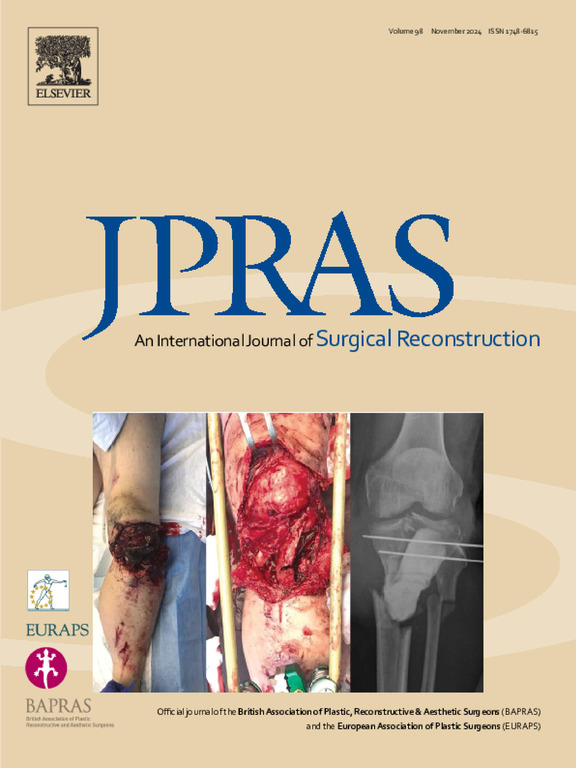利用ChatGPT对自体脂肪移植进行文献综述
IF 2.4
3区 医学
Q2 SURGERY
Journal of Plastic Reconstructive and Aesthetic Surgery
Pub Date : 2025-04-17
DOI:10.1016/j.bjps.2025.04.015
引用次数: 0
摘要
chatgpt是一种大型语言模型(LLM),已被提议作为一种科学写作工具,尽管其伦理使用在学术界仍然是一个备受争议的话题。本文定义了ChatGPT在撰写整形外科文献综述中的优点和缺点,并描述了优化gpt生成输出的适当方法。方法利用问卷调查的方法,对整形外科的相关文献进行综述。我们选择了自体脂肪移植,ChatGPT生成了文献综述的每个部分,并引用了引文,随后对其准确性进行了评估。评估了医学专业人员区分chatgpt生成的和已发表的脂肪移植摘要的能力。结果schatgpt成功构思并进行了自体脂肪移植术的文献综述。该模型在提纲创建、文章总结、内容编辑等方面表现良好。它引发了一篇关于脂肪移植的专业评论,尽管它的说法是泛化的,不完全是事实,而且缺乏准确的引用。ChatGPT提供了21个引用,其中5个正确引用了真实的文章。其中8篇在出版细节中包含错误,例如出版日期和作者列表。剩下的8个无法在PubMed中找到(幻觉)。医学专业人员无法将chatgpt生成的材料与已发表的摘要区分开来。结论在保持适当警惕的情况下,ChatGPT可在整个文献综述过程中谨慎地用作写作助手;然而,作者必须核实所有的科学主张和引用。ChatGPT最大的限制仍然是它的幻觉倾向,这破坏了生成的手稿的可靠性,并使不准确的信息永久存在。本文章由计算机程序翻译,如有差异,请以英文原文为准。
Using ChatGPT to write a literature review on autologous fat grafting
Background
ChatGPT is a large language model (LLM) that has been proposed as a scientific writing tool, though its ethical use remains a highly debated topic within the academic community. This article defines the strengths and weaknesses of ChatGPT in writing a plastic surgery literature review and describes proper methodologies for optimizing GPT-generated output.
Methods
ChatGPT-4o was prompted to brainstorm topics for a literature review on plastic surgery. Autologous fat grafting was chosen and ChatGPT generated each section of the literature review with citations, which were subsequently evaluated for accuracy. The ability of medical professionals to discriminate between a ChatGPT-generated and published fat grafting abstract was assessed.
Results
ChatGPT successfully conceived and performed a literature review on autologous fat grafting. The model performed well in outline creation, article summarization, and editing content. It generated a professional review of fat grafting, though its claims were generalized, not completely factual, and lacked accurate citations. ChatGPT provided 21 citations, 5 of which correctly referenced a real article. Eight contained errors in their publication details, such as publication dates and author lists. The remaining 8 were unable to be found in PubMed (hallucinated). Medical professionals were unable to distinguish ChatGPT-generated material from a published abstract.
Conclusions
With appropriate vigilance, ChatGPT may be cautiously used as a writing assistant throughout the literature review process; however, authors must verify all scientific claims and citations. ChatGPT’s greatest limitation remains its tendency to hallucinate, which undermines the reliability of a generated manuscript and perpetuates inaccurate information.
求助全文
通过发布文献求助,成功后即可免费获取论文全文。
去求助
来源期刊
CiteScore
3.10
自引率
11.10%
发文量
578
审稿时长
3.5 months
期刊介绍:
JPRAS An International Journal of Surgical Reconstruction is one of the world''s leading international journals, covering all the reconstructive and aesthetic aspects of plastic surgery.
The journal presents the latest surgical procedures with audit and outcome studies of new and established techniques in plastic surgery including: cleft lip and palate and other heads and neck surgery, hand surgery, lower limb trauma, burns, skin cancer, breast surgery and aesthetic surgery.

 求助内容:
求助内容: 应助结果提醒方式:
应助结果提醒方式:


